Alex Friess: Select Research Activities
Dr. Friess’ research background includes the broad field of experimental fluid dynamics (including laser diagnostics, and aerodynamic design and performance optimization), as well as renewable energy, energy efficiency and engineering education. He has industrial experience as an entrepreneur in the Solar Energy field, and he has been active as consultant and design engineer working on a variety of projects, including participating in the design and engineering of South Africa’s yacht for the America’s Cup 2007. Current and past research projects include:
Uncrewed Aerial Vehicles (UAV)
- Lighter than Air (LTA) vehicles
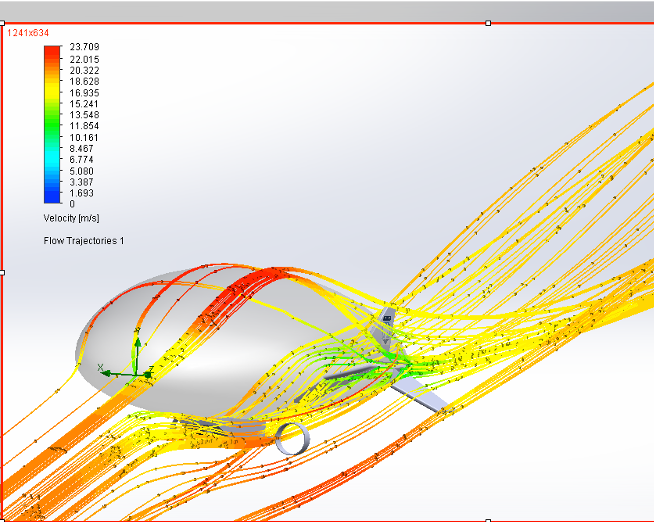
Over the past decade, there has been renewed interest in LTA airship technology. Airships, due to their inherent buoyancy, offer long endurance, with propulsive requirements being reduced to station keeping or flying specific mission profiles. In addition, LTA vehicles can carry significant payload, and offer Vertical take-off and Landing (VTOL) capability. Small unmanned airships and balloons are regularly used for advertising, and are only now being discovered as sensor deployment platforms. These applications however primarily utilize available vehicles that stem from the traditional advertising role, and as such do not leverage all the advantages of the LTA technology for the remote sensing (RS) application.
Our work focuses on developing an integrated simulation tool to support the optimization of small LTA vehicles (ranging from fully buoyant to hybrid lift configurations), and thus enable the development of vehicles capable of significantly longer endurance and area coverage than the current generation of multicopter drones, while maintaining VTOL capabilities (and thus be able to operate in constrained spaces such as forests) without the take off and landing limitations of fixed wing drones.
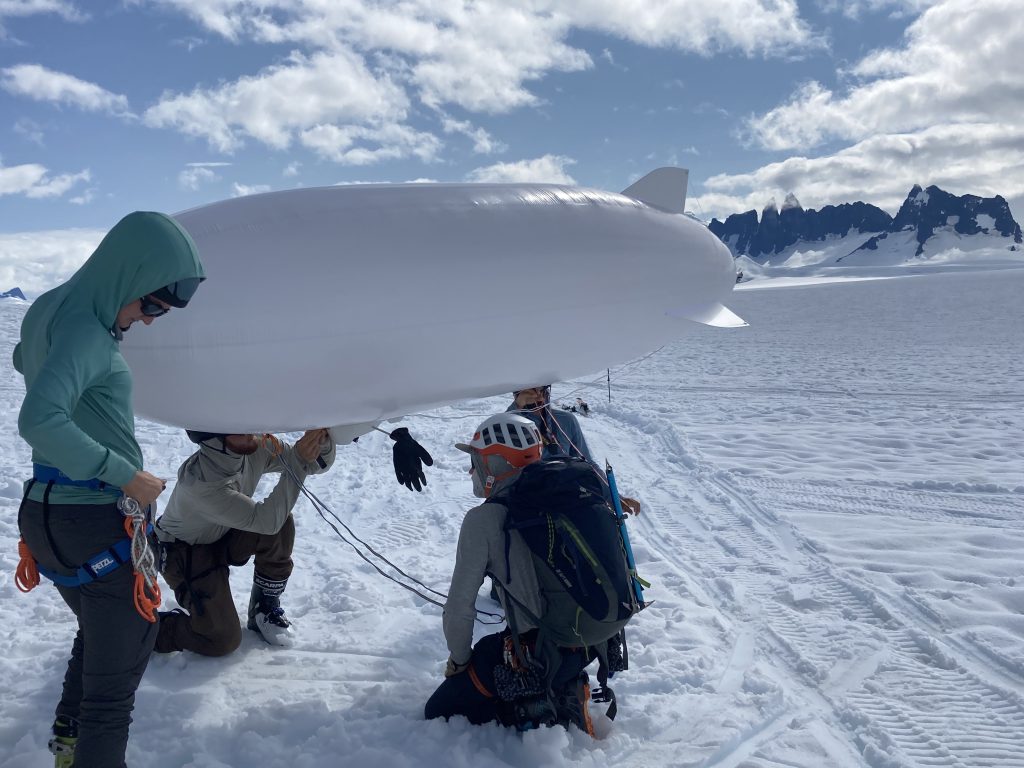
Theoretical and computational work is supplemented by LTA prototype design, construction and evaluation. The ultimate goal is to provide both design and simulation tools for mission optimized small airship drones, and to develop specific hardware for Maine’s remote sensing needs.
This work is in collaboration with the University of Maine School of Forest Resources and the Juneau Icefield Research Program through the University of Maine Climate Change institute, as well as NASA researchers. The work is supported by the Maine Space Grant Consortium and NASA.
- Hybrid multi-copter – fixed wing vehicles
The focus here is on the development and testing of a hybrid drone that incorporates VTOL capabilities into a traditional fixed wing UAV, with the intention of extending this range and payload capacity. The project is conducted by Mechanical Engineering Capstone Students.
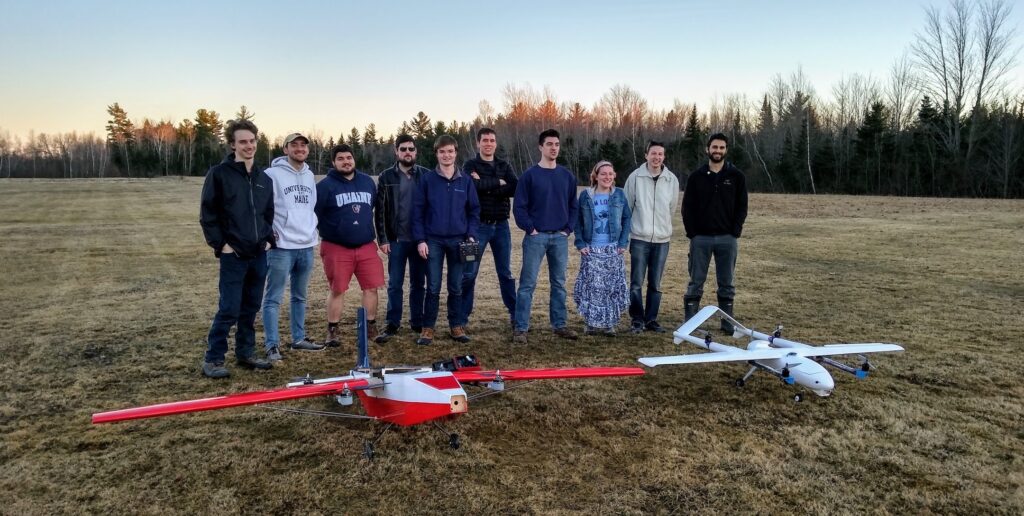
This project is funded by a NASA EPSCoR grant and conducted in collaboration with researchers and students from the School of Forest Resources and the remote sensing/geo-spatial lab.
Fluid Mechanics and Aerodynamics
- Energy efficiency
Dr. Friess is currently a Co-PI on a DOE grant that explores the capabilities of Wood Insulated Panels (WIP’s) to be used instead of traditional insulation materials for new construction and retrofit residential housing applications.
In addition, Dr. Friess has worked on building infiltration and infiltration measurement, as well as energy retrofits in extreme climates (i.e., Dubai).
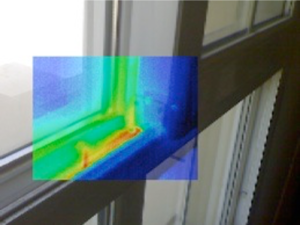
Building infiltration is responsible for up to 34% of energy losses in residential buildings in Maine, and constitutes the single most important energetic efficiency factor (the 2015 Maine Comprehensive Energy Plan Update reports that Maine spends over 3% of its GDP on heating costs, resulting in over 500 Million attributable to infiltration).
Infiltration occurs through cracks and openings in the building walls and ceiling, and can change over time as the building ages and the envelope deteriorates (e.g. see Fig. 1). Current technology to assess infiltration almost exclusively relies on a Blower Door Test (BDT) upon building commissioning. The BDT creates a steady pressure difference between the inside and the outside of the building, and measures the mass flow rate required by the fan to maintain that pressure difference (typically 50Pa). Thus real infiltration is not measured, but rather an artificial flow rate due to a constant pressure difference of 50Pa. Furthermore, the one-time blower door test cannot detect progressive deterioration of the building envelope, and as such is unable to diagnose infiltration losses over time. The work conducted here will generate the proof of concept of a distributed differential-pressure recovery time system that remains installed in the building and that is capable of continuously measure infiltration and building envelope health.
This work has been supported through the University of Maine Research Reinvestment Fund.
- Sports Engineering and Aerodynamics
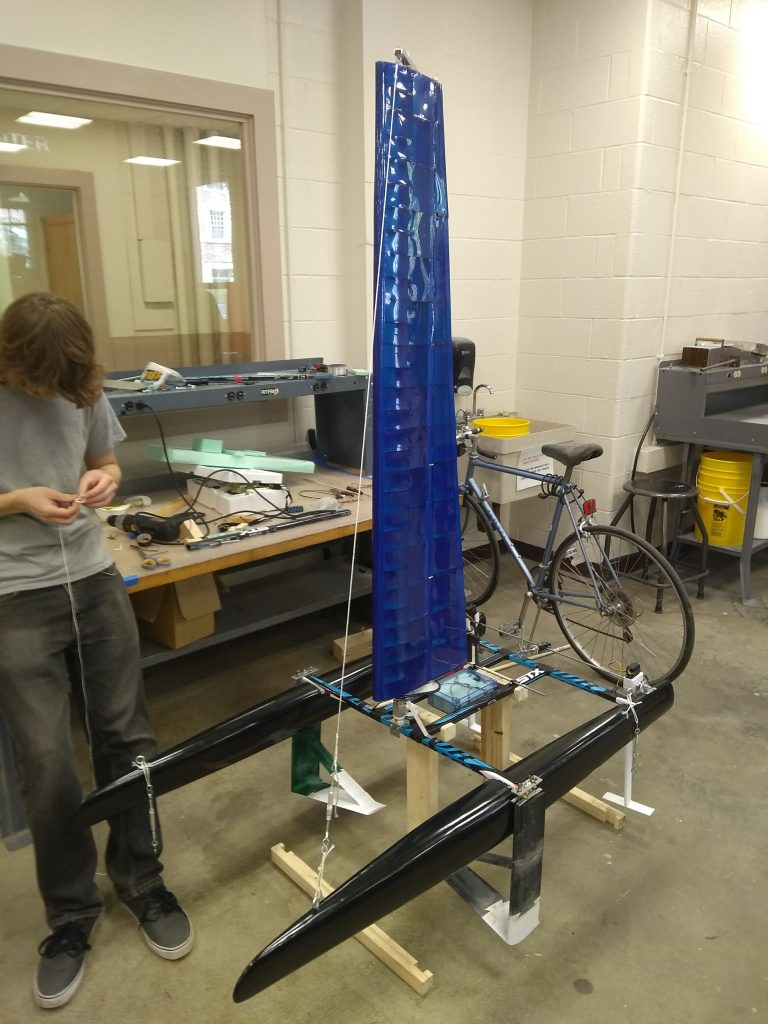
While spectator sports at venues such as the Olympics, the America’s Cup, and World Championships celebrate the achievement of world class athletes, their peak performance is often made possible by engineers that design and optimize their equipment and training. This involvement is critical in any sport (one must only think of the advanced swimming suits to reduce drag, or golf balls that fly farther than others), and is particularly noteworthy in sports that utilize sophisticated equipment, such as car and yacht races. Dr. Friess has experimentally researched the position and equipment of the US Speed Skiing team, and has been active as design engineer and consultant for over 10 years in Europe and Africa, where he participated in the first South African America’s Cup Challenge.
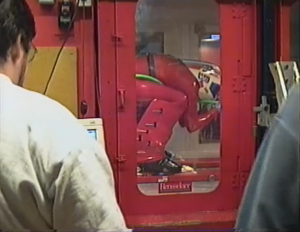
Dr. Friess’ research group is currently developing a Velocity Prediction Program for foiling AC75 type yachts. This VPP will be used to evaluate the effect of aero and hydro performance enhancements and eventually lead to a model that is capable of evaluating the yacht’s dynamic response.
In addition, sports engineering research continues at UMaine and in particular as part of capstone activities, where for example, a “smart” swimming starting block is under development to assess the optimal impulse for a swimmer diving into the pool, hydrofoiling catamarans, and more
.
For further information contact Dr. Friess at wilhelm.friess@maine.edu
